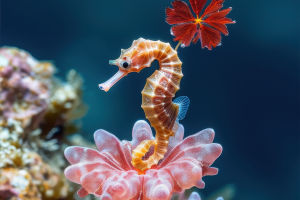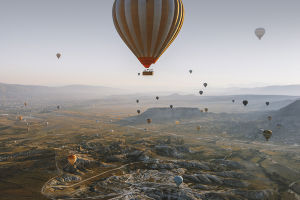Penguins are one of the most fascinating creatures on Earth. They may not fly like other birds, but they rule the icy waters with unmatched swimming skills.
Today, let’s dive deep into their world and uncover some incredible facts about these adorable yet resilient birds.
Penguins: The Flightless Birds of the South
Unlike most birds, penguins cannot fly. Instead, their wings have evolved into strong flippers, making them exceptional swimmers. They can glide through the water at impressive speeds, reaching up to 10 km/h. With a body shape designed for agility, they maneuver underwater like professional divers.
While penguins are mainly associated with Antarctica, not all of them live in extreme cold. Some species, like the Galápagos penguin, thrive in warmer regions near the equator. However, most penguins prefer colder climates, with the emperor and Adélie penguins being the true residents of the icy Antarctic.
How Do Penguins Survive the Cold?
Penguins are built to withstand freezing temperatures. Their bodies are covered in thick, overlapping feathers that provide excellent insulation. Beneath their skin, a thick layer of blubber—up to 3 cm in some species—keeps them warm even in the harshest conditions.
Additionally, penguins have a unique way of huddling together in large groups to conserve heat. Emperor penguins, for example, take turns standing on the outer edge of the huddle while others stay warm inside. This teamwork helps them survive the extreme Antarctic winters, where temperatures can drop below -50°C.
A Unique Way of Walking and Sliding
Penguins have a distinctive way of moving on land. Since their legs are set far back on their bodies, they waddle rather than walk. Though it may seem clumsy, this movement actually helps them balance on slippery ice.
When they need to move faster, penguins slide on their bellies, using their feet and flippers to push themselves forward. This technique, called "tobogganing," allows them to travel quickly across icy surfaces while conserving energy.
Their Diet: Masters of the Ocean Hunt
Penguins are excellent hunters, relying on their speed and agility to catch food. Their diet consists mainly of fish, squid, and krill. Some species can dive over 200 meters deep and hold their breath for several minutes while searching for prey.
Emperor penguins are the deepest divers among all penguin species. They can stay underwater for up to 20 minutes, reaching depths of around 500 meters. Their bodies are adapted to store oxygen efficiently, allowing them to dive without getting tired quickly.
The Journey of Parenthood
Penguins are known for their strong parenting skills. Most species form monogamous pairs during the breeding season, working together to raise their chicks.
One of the most famous examples is the emperor penguin. After the female lays a single egg, she passes it to the male, who keeps it warm by balancing it on his feet and covering it with a flap of skin called a brood pouch. During this time, which lasts around two months, the male fasts while the female goes to the ocean to hunt.
Once the chick hatches, both parents take turns feeding and protecting it until it is strong enough to survive on its own. This teamwork ensures the next generation of penguins continues to thrive.
Why Do Penguins Have Black and White Feathers?
Penguins’ black and white coloring serves as camouflage. When viewed from above, their black backs blend into the dark ocean, making them harder for predators to spot. From below, their white bellies match the bright surface of the water, helping them avoid detection from prey.
This natural camouflage, known as countershading, is crucial for their survival in the wild, where they face threats from seals, sharks, and other predators.
Protecting the Future of Penguins
Sadly, many penguin species are facing challenges due to climate change and human activities. Melting ice, overfishing, and pollution threaten their natural habitats. Conservation efforts are being made worldwide to protect these incredible birds and ensure their survival for future generations.
By supporting sustainable fishing practices and reducing plastic waste, we can all help penguins continue to thrive in their icy homes.
See You Next Time, Lykkers!
Penguins are more than just cute animals; they are incredible survivors with amazing adaptations. Whether diving deep into the ocean or braving the harshest winters, they never fail to impress us.
What surprised you the most about penguins? Let’s chat in the comments! See you next time for more fascinating discoveries!
Emperor penguin chicks jump off a 50-foot cliff in Antarctica NEVER-BEFORE-FILMED FOR TV | Nat Geo
video by National Geographic


